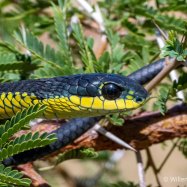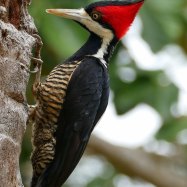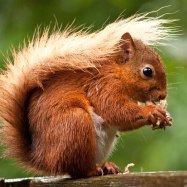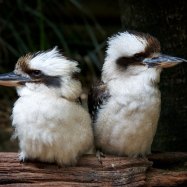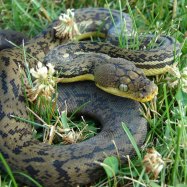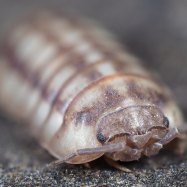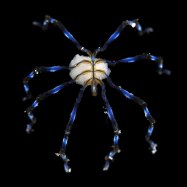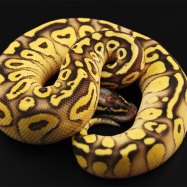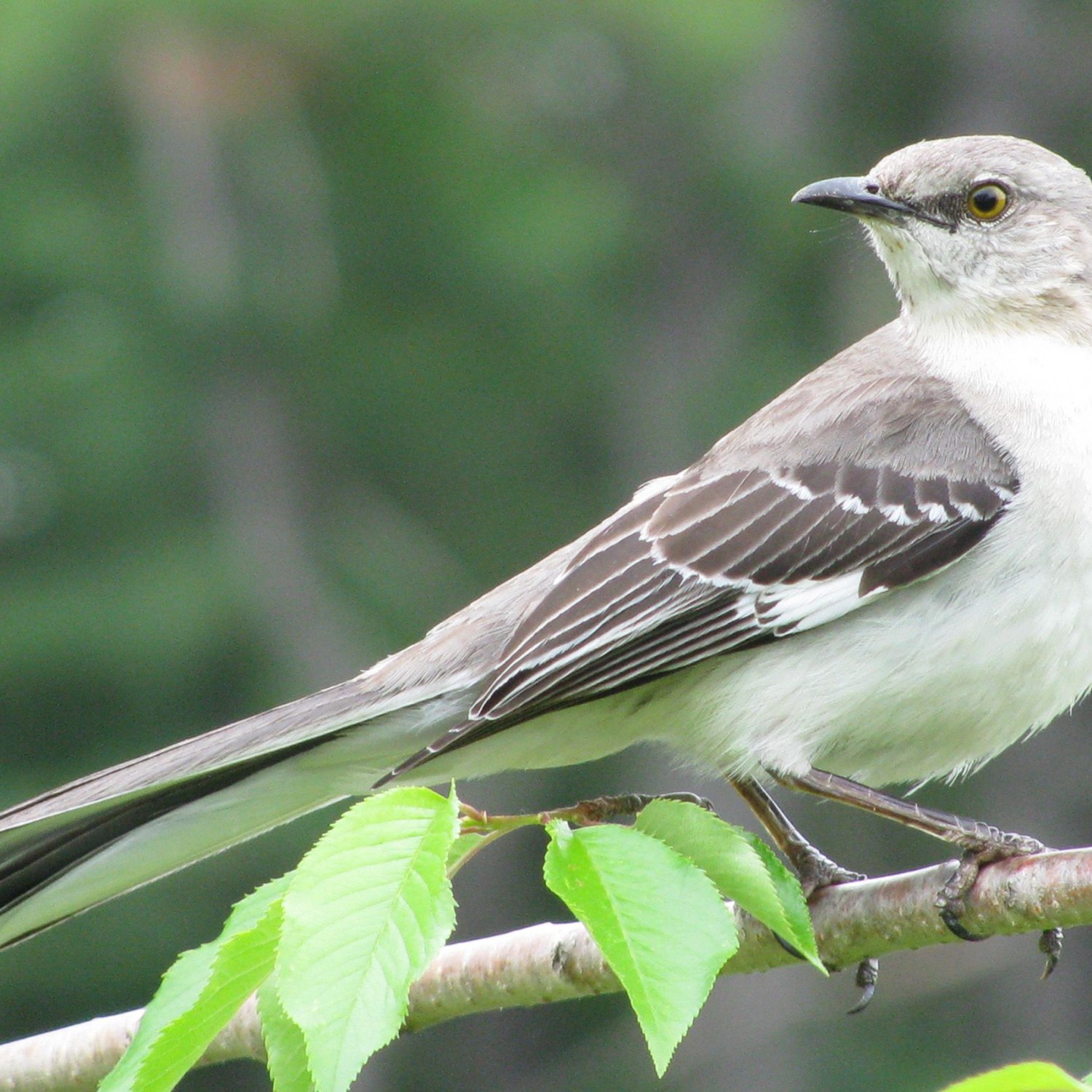
Mockingbird
Mockingbirds typically measure about 9-10 inches in length.
Did you know that Mockingbirds, from the family Mimidae, are known for their exceptional mimicry abilities and can imitate the sounds of other birds and even car alarms? These beautiful birds can be found all across the US, preferring warmer climate regions like the southeast and southwest. Keep an eye out for their slender bodies, long tails, and strong legs while on your next nature stroll.
Animal Details Summary:
Common Name: Mockingbird
Kingdom: Animalia
Habitat: Mockingbirds can be found in a variety of habitats, including forests, woodlands, scrublands, and urban areas.
The Fascinating World of Mockingbirds: Masters of Mimicry
The world of birds is full of incredible species, each with unique characteristics and behaviors. However, there is one bird that stands out amongst the rest, known for its impressive mimicry ability and beautiful songs – the Mockingbird.Scientifically known as Mimus polyglottos, the Mockingbird, also known as common Mockingbird, belongs to the animal kingdom, phylum Chordata, class Aves, order Passeriformes, and family Mimidae. This bird can be found in a variety of habitats, including forests, woodlands, scrublands, and urban areas, making it a common sight across different regions Mockingbird.
But what makes the Mockingbird so fascinating? Let's dive into the world of these amazing creatures and discover their incredible features.
Habitat and Distribution
Mockingbirds are primarily found in North and Central America, with their native range spanning from Mexico to various parts of the United States. They can be found throughout the Caribbean, including islands like Jamaica and Cuba.In the United States, Mockingbirds can be found in a variety of locations, especially in the southeastern and southwestern regions. They are also seen in parts of the Great Plains and California. These birds are highly adaptable and can thrive in different environments, from rural to urban areas.
When it comes to their habitat, Mockingbirds are not very picky. They are commonly found in open areas with shrubs, trees, or scattered bushes, making parks, gardens, and backyards ideal environments for them. They can also be seen in agricultural fields and along roadsides Manatee.
Feeding Habits
Mockingbirds are omnivorous birds, meaning they eat a variety of foods. Their diet primarily consists of insects, such as ants, beetles, grasshoppers, and caterpillars. They are also fond of fruits, berries, and nectar, which they obtain from flowers. In addition, Mockingbirds will occasionally feed on small reptiles, like lizards and snakes, as well as amphibians.These birds use their slender beaks to catch and consume their food, and their strong legs allow them to hop and walk on the ground in search of food. They also have a unique feeding behavior where they "harry" insects, meaning they flush them from their hiding places by jumping and running on the ground. This behavior also helps them hunt for worms, spiders, and other invertebrates.
Physical Appearance
Mockingbirds have a distinct appearance that sets them apart from other bird species. They have a gray-brown upper body with white underparts, giving them a distinct color contrast. Their wings have white patches, which are visible when they fly, and a white stripe on their wings and tail.These birds have a slender body and relatively long tail, which they often cock and uncock while foraging. Their medium-sized beak is slightly curved, perfect for catching and consuming insects and plants. Mockingbirds also have strong legs and sharp claws, allowing them to perch on branches and walk on the ground with ease.
On average, Mockingbirds measure about 9-10 inches in length, making them medium-sized birds. Their wingspan ranges from 18-21 inches, and they can weigh about 1.5-2.5 ounces.
Mimicry Ability
One of the most amazing features of Mockingbirds is their exceptional mimicry ability. These birds are talented singers, and their songs are not just a simple repetition of notes. They can mimic the sounds of other bird species, incorporating them into their songs. This ability has earned them the title of the "Masters of Mimicry."Mockingbirds can imitate the songs of over 40 different bird species, including the sounds of other animals, such as frogs, cats, and dogs. They can even replicate human-made sounds, from car alarms to musical instruments. This remarkable skill is believed to help them attract potential mates and defend their territories.
While male Mockingbirds are known to be more vocal and skilled in mimicry, female Mockingbirds can also sing and mimic sounds, but to a lesser extent. They usually sing less during breeding season but are equally talented when it comes to mimicry.
Role in Ecosystem
Mockingbirds play a crucial role in the ecosystem. As mentioned earlier, these birds primarily feed on insects and other small creatures, making them essential for pest control. They can also help with pollination by feeding on nectar and spreading pollen from flower to flower.In addition, their songs and mimicry play a significant role in bird communication and species recognition. They add diversity to the soundscape of their habitats, making them important for maintaining a balanced and healthy ecosystem.
Threats and Conservation
Mockingbirds are not considered threatened or endangered species, and their populations are currently stable. However, like many other bird species, they do face a few threats that can impact their numbers.One of the main threats to Mockingbirds is habitat loss and fragmentation. As human development continues to expand, these birds are losing their natural habitats, which can lead to a decline in their numbers. Urbanization also brings potential dangers, such as collisions with buildings and vehicles and exposure to pesticides and pollution.
In some areas, Mockingbirds are also hunted for their meat or kept as pets, which can decrease their population. However, it is illegal to capture or keep Mockingbirds as pets in the United States.
To protect Mockingbirds and their habitats, it is essential to raise awareness about their importance and the impact of human activities on their survival. Individuals can also help by creating bird-friendly environments in their backyards and supporting conservation efforts.
Fun Facts about Mockingbirds
- The state bird of Florida, Arkansas, Mississippi, Tennessee, Texas, and the Northern Mariana Islands is the Mockingbird.- The name "Mockingbird" comes from the bird's ability to mock or imitate other sounds.
- Mockingbirds are monogamous and stay with their partners for life.
- They can produce up to 200 different sounds and songs.
- Mockingbirds are the only mockingbird species in the United States.
- These birds are also known to protect their nests aggressively, even attacking humans who come too close.
- Mockingbirds can sing all day, even at night during the full moon.
- They are highly territorial and will defend their territory from other birds and animals.
Conclusion
In the world of birds, the Mockingbird stands out as a remarkable and fascinating species. Their ability to mimic sounds and songs of other animals is truly remarkable, and their vital role in the ecosystem makes them crucial for maintaining balance in the environment.Although they face some threats, these birds continue to thrive and enchant us with their beautiful songs and unique behaviors. So next time you hear a symphony of sounds in your backyard, take a closer look, it might just be a Mockingbird showing off its incredible talent.

Mockingbird
Animal Details Mockingbird - Scientific Name: Mimus polyglottos
- Category: Animals M
- Scientific Name: Mimus polyglottos
- Common Name: Mockingbird
- Kingdom: Animalia
- Phylum: Chordata
- Class: Aves
- Order: Passeriformes
- Family: Mimidae
- Habitat: Mockingbirds can be found in a variety of habitats, including forests, woodlands, scrublands, and urban areas.
- Feeding Method: Mockingbirds primarily feed on insects, berries, fruits, and nectar. They also eat small reptiles and amphibians.
- Geographical Distribution: Mockingbirds are native to North and Central America. They can be found throughout the United States, Mexico, and parts of the Caribbean.
- Country of Origin: United States
- Location: Mockingbirds can be found in various locations across the United States, especially in the southeastern and southwestern regions.
- Animal Coloration: Mockingbirds have a gray-brown upper body with white underparts. They have white patches on their wings and a white stripe on their wings and tail.
- Body Shape: Mockingbirds have a slender body and a relatively long tail. They have a medium-sized beak and strong legs for hopping and walking on the ground.
- Length: Mockingbirds typically measure about 9-10 inches in length.
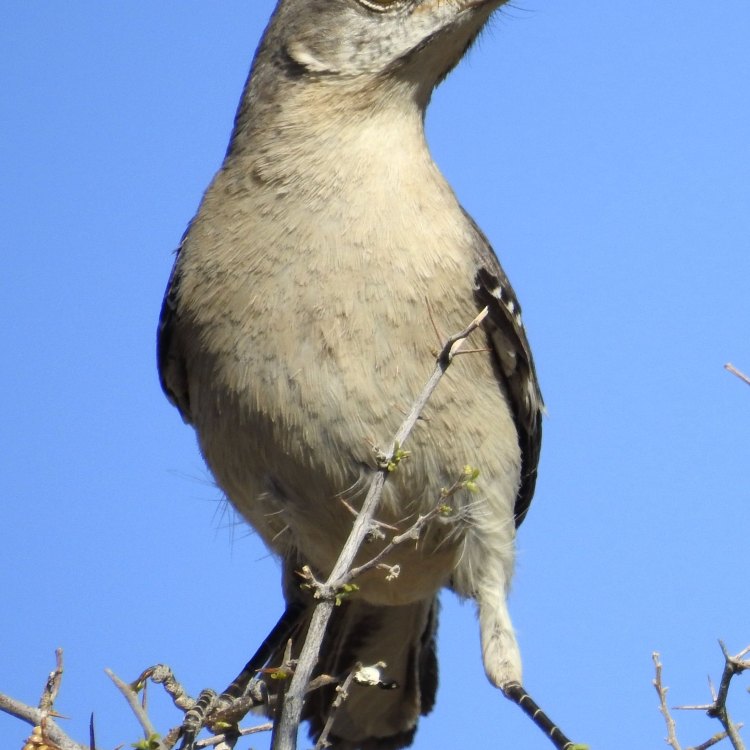
Mockingbird
- Adult Size: Mockingbirds are small-sized birds, with an average weight of about 1-2 ounces.
- Average Lifespan: Mockingbirds can live up to 8-12 years in the wild.
- Reproduction: Mockingbirds breed in the spring and summer. Males attract females by singing a complex repertoire of songs. They build nests in shrubs or trees and lay 3-6 eggs.
- Reproductive Behavior: Mockingbirds are monogamous and form long-term pair bonds. Both males and females take part in raising the young.
- Sound or Call: Mockingbirds are well-known for their ability to mimic the songs of other birds. They can imitate a wide variety of sounds, including other birds, sirens, and even musical instruments.
- Migration Pattern: Mockingbirds are generally non-migratory, but some populations may undertake short-distance migrations in response to food availability and weather conditions.
- Social Groups: Mockingbirds are generally solitary birds, but they may occasionally gather in small groups, especially during the breeding season.
- Behavior: Mockingbirds are highly territorial and will aggressively defend their territory against other birds and animals. They are also known for their bold and curious behavior.
- Threats: The main threats to mockingbirds include habitat loss, urbanization, predation by domestic cats, and pesticide use.
- Conservation Status: Mockingbirds are listed as a species of Least Concern by the International Union for Conservation of Nature (IUCN).
- Impact on Ecosystem: Mockingbirds play a role in seed dispersal by consuming fruits and berries and then excreting the seeds in other locations. They also help control insect populations.
- Human Use: Mockingbirds are enjoyed by birdwatchers for their beautiful songs and mimicry abilities. They are also important as pollinators and seed dispersers.
- Distinctive Features: Mockingbirds have a long tail with white wing bars, a white patch on their wings, and a white stripe on their wings and tail.
- Interesting Facts: 1. Mockingbirds can imitate over 200 different sounds and songs. 2. They are named 'mockingbirds' because of their ability to mimic the songs of other birds. 3. They are considered one of the best singers in the bird world. 4. Mockingbirds have been featured in literature, such as in the novel 'To Kill a Mockingbird' by Harper Lee. 5. They are highly adaptable birds and can thrive in urban areas.
- Predator: Mockingbirds are preyed upon by larger birds of prey, such as hawks and owls, as well as snakes and mammals.
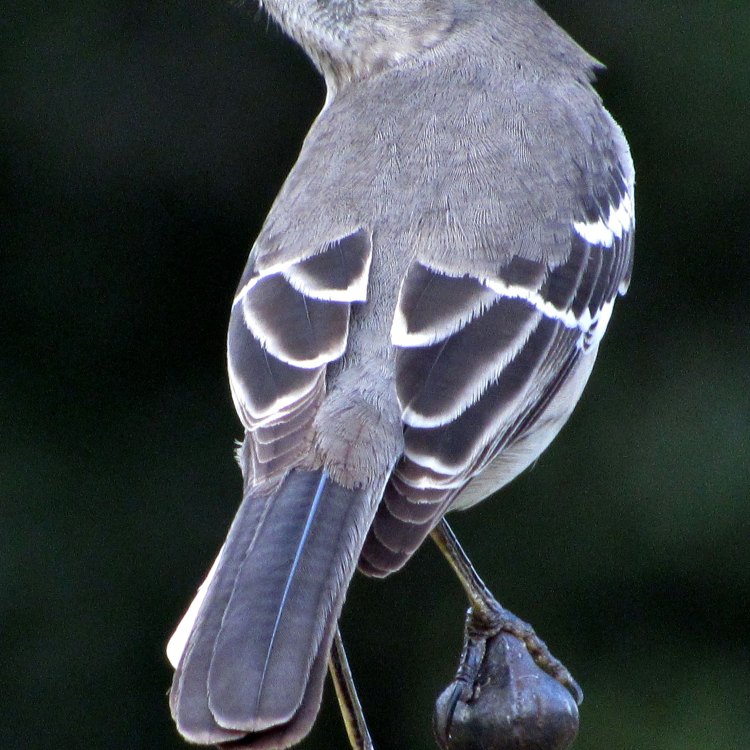
Mimus polyglottos
The Versatile and Vocal Mockingbird: A Fascinating Bird Worth Getting to Know
Have you ever heard a bird sing and thought you were listening to an entire symphony? It's highly likely that you were actually listening to a mockingbird. These charismatic birds are known for their masterful mimicry abilities and have captured the hearts of bird lovers for centuries. In this article, we will take a deep dive into the world of the mockingbird, exploring its physical characteristics, behavior, and unique traits.Let's start with the basics PeaceOfAnimals.Com. Mockingbirds are small-sized birds, with an average weight of about 1-2 ounces and a length of 8-11 inches. They are mostly gray with white patches on their wings and tail. Their most distinctive features are their long tail with white wing bars and a white stripe on their wings and tail. These striking markings make them easily distinguishable from other birds.
In terms of lifespan, mockingbirds can live up to 8-12 years in the wild. They are found throughout North and Central America, and their population is stable. This can be attributed to their adaptable nature and wide range of habitats, including gardens, parks, and forests.
When it comes to reproduction, mockingbirds breed in the spring and summer months. The male mockingbird attracts females by singing a complex repertoire of songs, showcasing his vocal abilities and genetic fitness Marmot. They are monogamous birds and form long-term pair bonds, with both parents taking part in raising the young. Mockingbirds build their nests in shrubs or trees using twigs, grass, and moss, and usually lay 3-6 eggs. Once the eggs hatch, both parents work together to feed and protect their young.
One of the most fascinating aspects of mockingbirds is their ability to mimic sounds. They are well-known for their impressive vocal range and can imitate over 200 different sounds and songs. This includes the songs of other birds, but also a wide variety of other sounds like sirens, car alarms, and even musical instruments. This talent not only serves as a means of attracting mates but also helps them defend their territory and confuse predators.
Speaking of territory, mockingbirds are highly territorial birds. They will aggressively defend their territory against other birds and even larger animals. Their bold and curious behavior also makes them unafraid of human presence and can be spotted in urban areas, parks, and even backyards. They are also known for their distinct, popping flight pattern, which adds to their unique charm.
Despite their adaptability and wide range of habitats, mockingbirds face several threats in the wild. Habitat loss, urbanization, and pesticide use are some of the major human-driven threats to their population. They are also preyed upon by larger birds of prey such as hawks and owls, as well as snakes and mammals. However, due to their stable population and widespread distribution, mockingbirds are currently listed as a species of Least Concern by the International Union for Conservation of Nature (IUCN).
Mockingbirds play an important role in their ecosystem. As they are omnivorous birds, they feed on a variety of fruits, berries, insects, and small reptiles. They also help with seed dispersal, consuming fruits and berries and then excreting the seeds in different locations. This process helps spread plant diversity and maintains a healthy ecosystem. Additionally, mockingbirds also act as pollinators, helping to ensure the growth and survival of plants and flowers.
For humans, mockingbirds hold a special place in literature, culture, and science. They have been featured in various works of literature, such as the novel 'To Kill a Mockingbird' by Harper Lee, representing themes of innocence and moral courage. They are also important subjects for scientific studies, as their vocal abilities and mimicry skills continue to amaze researchers.
Apart from their significant ecological and cultural contributions, mockingbirds are also enjoyed by birdwatchers for their beautiful songs and mimicry abilities. These birds are highly revered for their vocal talents and are considered one of the best singers in the bird world. Their songs have inspired countless musicians and continue to bring joy to people all over the world.
In conclusion, the mockingbird is a remarkable and versatile bird that deserves our admiration and protection. From its beautiful songs and mimicry abilities to its adaptability and important role in the ecosystem, these birds have captivated our hearts and minds for centuries. So, next time you hear a symphony of sounds coming from a nearby tree, take a moment to appreciate the magnificent mockingbird.
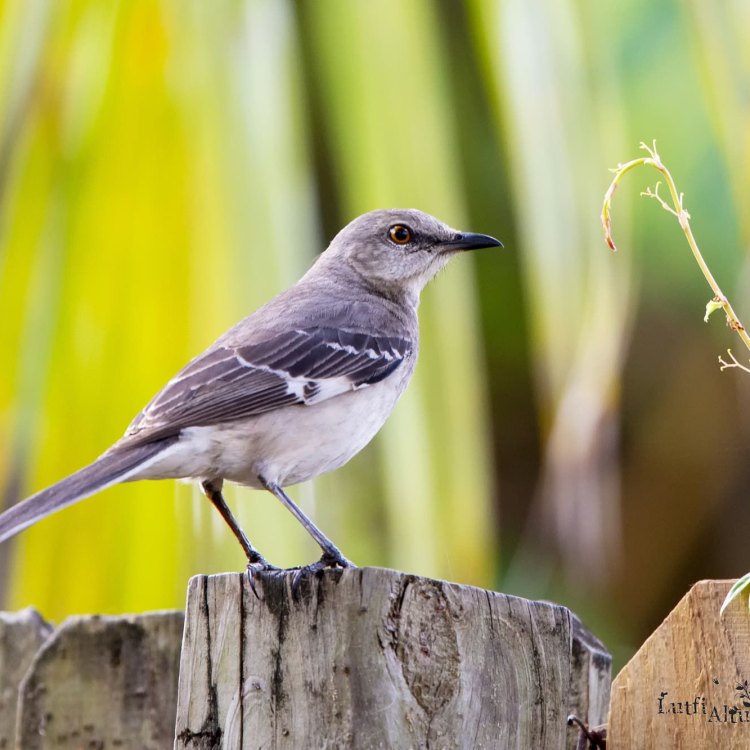
The Fascinating World of Mockingbirds: Masters of Mimicry
Disclaimer: The content provided is for informational purposes only. We cannot guarantee the accuracy of the information on this page 100%. All information provided here may change without prior notice.

